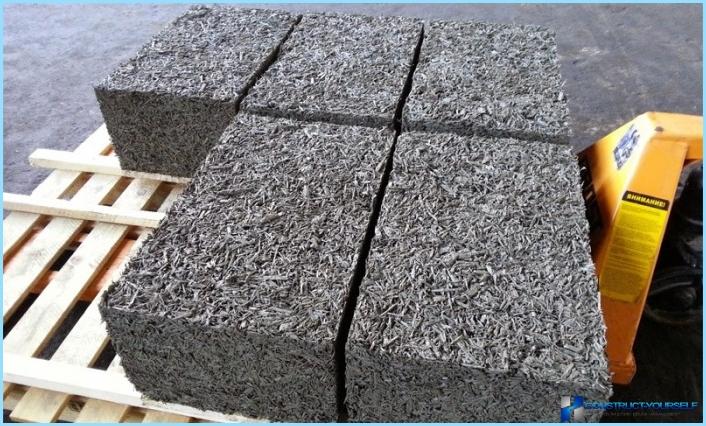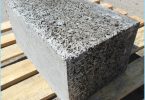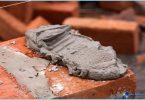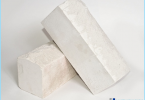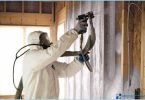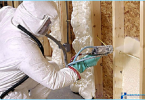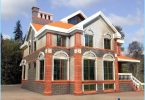The contents
Since the rules for conduction and requirements for sustainable materials for construction are becoming stricter, paying special attention to the choice of material from which constructed the building. It is important to match the sanitary-hygienic requirements was quality, environmental, energy-saving and durable. One such material is the arbolit. Wood concrete blocks are increasingly used in construction and not in vain. Their technical features and properties make the material ideal for construction of residential buildings. Unit has light weight, various size you can choose according to his needs, and excellent performance on strength, frost resistance and thermal conductivity.
In this article we take a closer look at what are the dimensions of the concrete block, weights and specifications.
Production and composition ^ the
As you know, the arbolit is made from a mixture of concrete, sawdust and chemical additives. Thanks to this material holds advantages such as concrete and wood. The finished mixture can be served in several forms:
- as a hollow block;
- how large masonry block;
- as the insulating plate;
- as a ready solution for filling on the spot.
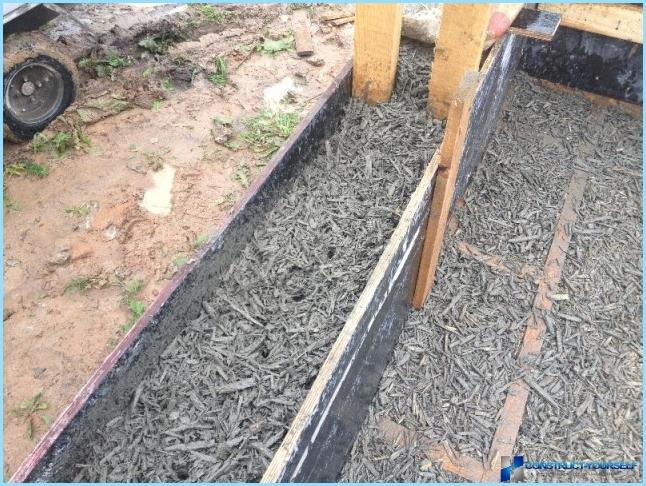
This files most often for construction used concrete blocks. With them just to work, to transport and to do their laying. Standard size for load-bearing walls, is 500?300?200 mm. with such dimensions, the construction of any buildings much quicker than, for example, made of brick. Yes and mortar on the brickwork will need less. However need manufacturers have begun to expand the range of products, offering products having different sizes. We will talk about them further.
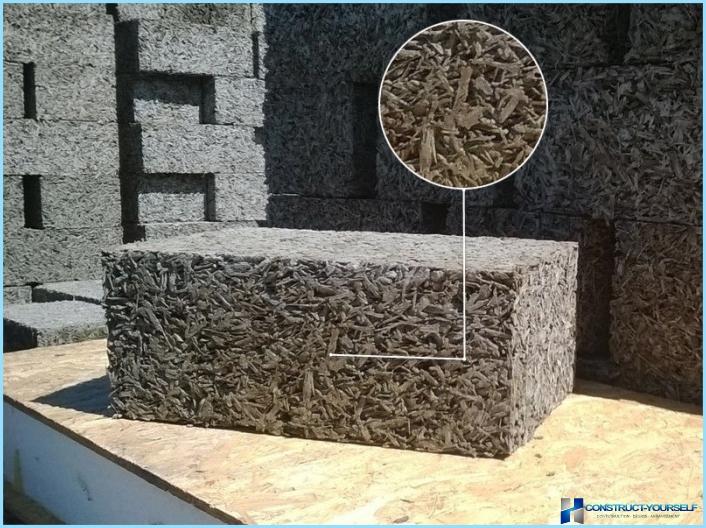
Wood concrete blocks are lightweight, but quite durable and energy saving. Due to the fact that the composition is wood, a material well suited for construction of houses in the harsh climate. But concrete, as a binder, serves as a guarantor of strength of concrete solution. The material can be done by yourself, but you can buy a ready-made unit. It will cost more, but it will be done correctly and without effort.
This is done in order to remove all harmful substances.
Size ↑
Also, what standard size concrete block is 500?300?200 mm are produced and other sizes. Each of them has its purpose and the purpose for which it is used.
- A wide piece 500?250?300 mm is Used for masonry exterior, load-bearing walls up to 3 floors. They can set the floor slab. 1 mThree there are 26.6 pieces of the block. For the same purpose, use 500?200?300 mm to 1 mThree – 33.3 per PCs.
- The middle piece 500?250?200 mm is Used for masonry exterior, load-bearing walls to the 2nd floor (for the construction of baths, garage or other business units). 1 mThree – 40 PCs.
- Narrow blocks – 500?250?150 mm. They build interior walls, insulate houses, baths, garages and barns. For 1 mThree need 53 PCs.
- Jumper – size of 1500?250?300 mm.
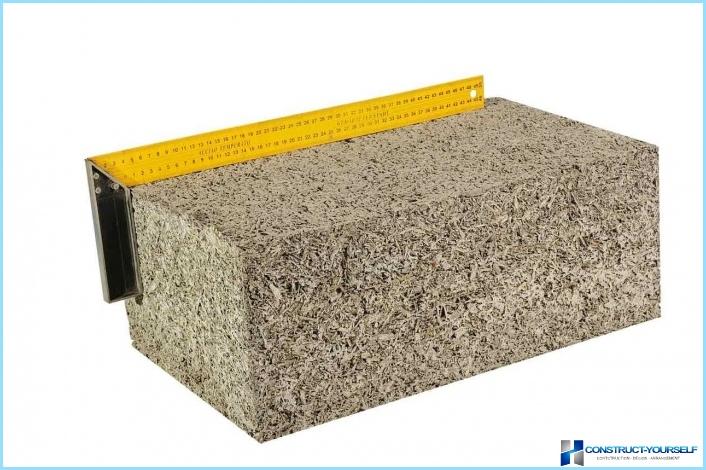
Due to the variety of dimensions, you can choose the right product for their purposes. And what they have weight? It all depends on what size is the block.
Weight ↑
One of the advantages of arbolit is its light weight. This allows you to save money for the Foundation, as a massive and in-depth basis is not required. Another plus to raise the unit and work with it quite easily. What weight concrete block?
- Wide blocks (500?250?300 mm) have a weight of about 24 kg. Mass 1 mThree is 638,4 kg. For the construction of 1 mThree the walls will require approximately 8 blocks. In finished form it will weigh 192 kg.
- Medium (500?250?200 mm) have a weight of about 20 kg per 1 mThree charged 800 kg.
- Narrow (500?250?150 mm) have a weight of 16 kg per 1 mThree 848 kg concrete block.
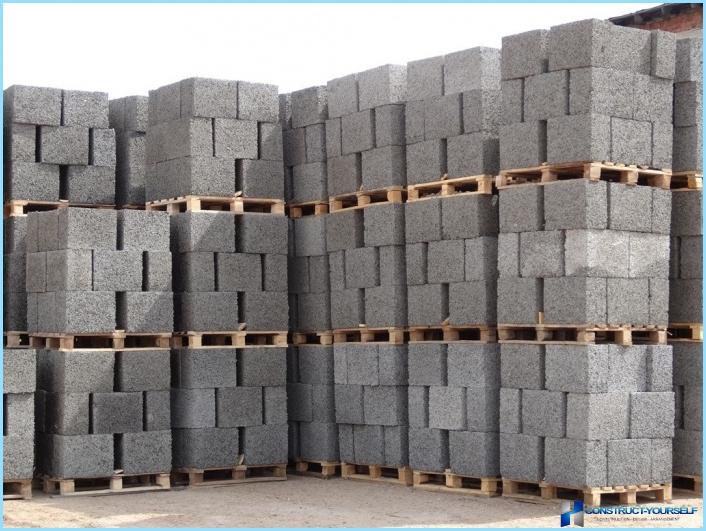
So you can see how small that is, here is an example. Weight solid sand-lime brick is equal to 3.7 kg per 1 mThree 513 pieces of bricks. Accordingly, their total weight is equal to: 3.7 V?513 = 18981 kg. Notice the difference? This is 2.5 times more. Although the bricks are smaller, their share is much higher. These specifications concrete block make the material ideal for construction. But, the size and weight of the products is not all.
Density ↑
One of the determining factors and the density of the material. The higher it is, the stronger the structure. Arbolit is conditionally divided into 2 types:
- thermal insulation;
- structural.
Insulation type is called so not for nothing, because thanks to low-density concrete block, construction has a high rate to conserve heat. The density of such products comes to 500 kg/mThree. But, to use them for building of load-bearing structures is impossible. This can lead to unwanted consequences. They are ideal for providing insulation of the outside walls of the buildings. In this case, the main part of the load from floors and roof will be transmitted to columns and other supporting elements.
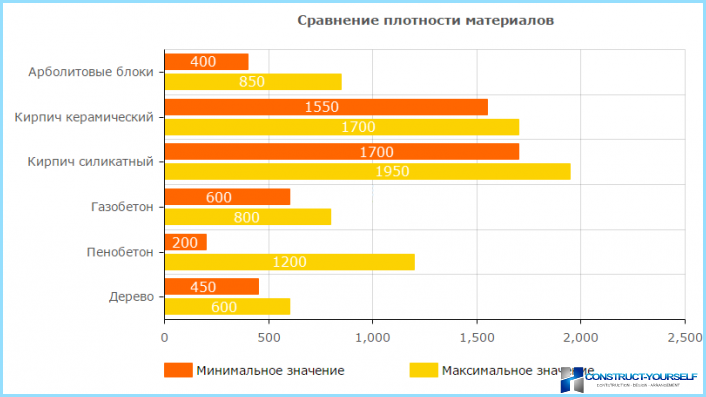
With regard to structural items, that they are suitable for construction of load-bearing walls and other structures. When this indicator reaches a density of 550-700 kg/mThree. Some manufacturers offer to buy the product, whose density is 850 kg/mThree. They have high load bearing capacity, but lose insulation materials.
Strength ↑
Referring to the characteristics of the material, we can not say about its strength. For arbolit it is equal to 30 kg/cmTwo. This is a pretty good indicator, because the same foam/aerated concrete strength below two times. Although the price of the same material. In addition, unlike foam/aerated concrete, for the walls of arbolita use lightweight nets, the thickness of which is 15 cm. This reduces the cost of construction works.
Depending on the density and strength determine the brand of the arbolit. Below is a table that will help you to understand these values.
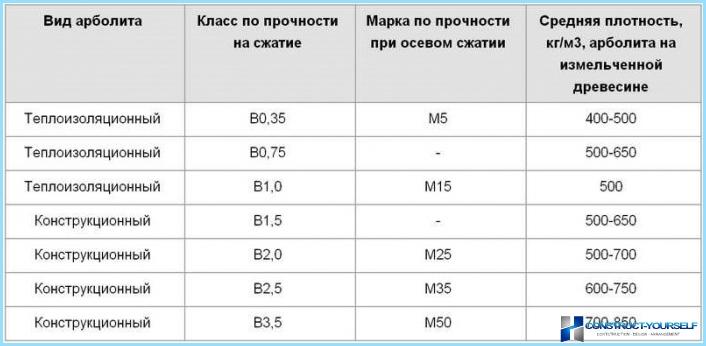
It is allowed to build load-bearing walls of a three-meter one-storey buildings made of material of class B. 1 and above. For large walls – fit class B1.5 and higher. And to build 2 or 3 floors, the necessary products B2.0 and B2.5.
The bending strength is 0.7 – 1 MPa. The elasticity of the blocks can be 2300 MPa. What gives? This material does not crack during use, while maintaining its original appearance. While concrete or aerated concrete under such loads has already begun to collapse.
Thermal conductivity ↑
You can say this is one of the main parameters. And here arbolit takes pride of place. Its woody composition, the material has a high heat capacity. Thus, in winter the room will be warm and summer – cool. Arbolit easily absorbs external heat.
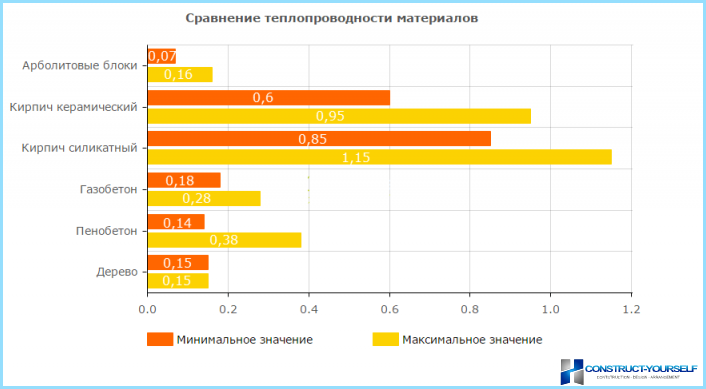
High thermal conductivity ensures that the heat in the house, therefore, further insulate the walls is not necessary. Enough to put good glass and doors. Then you can reduce the cost of heating in 2,5–3 times. In the building there is a stable climate and low humidity.According to GOST, the thickness of the walls of arbolita for a temperate climate should be 38 cm, But little who builds such walls. Most masonry walls using blocks of 500?300?200 mm, mounted flatwise one row.
Moisture absorption ↑
Features arbolita regarding the moisture absorption of the following:
- thermal insulation products have a value of 85%;
- construction – 75%.
As material is cement and sawdust glued together, accumulating on the surface of the water freely flows through the unit. Everything is simple: if you spill liquid on the material, air is displaced from the pores. When the source is removed, the liquid drains back, and the stone dries quickly.

Being in the masonry products do not pick up moisture from the environment. Cement and mineralized sawdust non-hygroscopic, therefore, poorly wetted. That’s why arbolit used for the erection of baths and other rooms with high humidity.
It is noteworthy that with abundant watering the walls of arbolita, water can get inside the room. Because of that, walls need plastered and doing exterior trim.
Frost resistance ↑
What is the figure? Is the number of cycles of freezing and thawing of the material, which not lost the initial characteristics. Blocks are destroyed in the result of the fact that the water in the voids expands. Accordingly, the more fluid, the less the number of cycles.
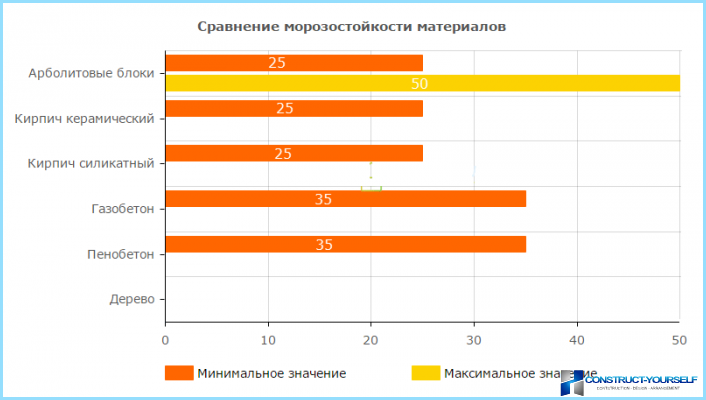
Minimally, this figure reaches F25 (cycles) and can reach up to F50. If to protect the walls from direct moisture, the rate can be increased. There were cases when the life of the building without damage went from 9 to 15 years.
Shrinkage ↑
Many say that the arbolit not subject to shrinkage. We can say that partially it is. Small shrinkage is observed only in the first months. Most often it ends with the maturation of products in production. A small rate of shrinkage occurs after the blocks are laid into the design. He is really miserable and is only 0.3–0.5% of.
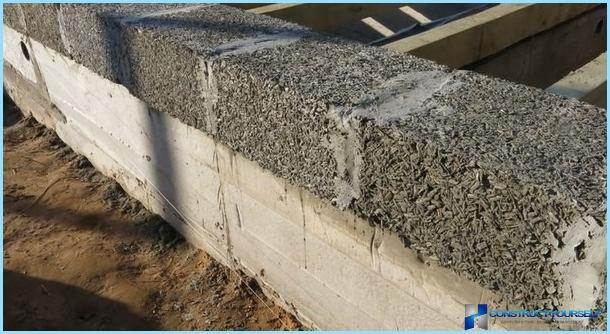
To compare the shrinkage of concrete is 1.5%, and foam block – 0,6–1,2.
Refractoriness ↑
Here the following figures:
- Flammability group G1, a material that burns hard;
- Flammability – B1, flame retardant;
- the smoke – D1, small smoke.
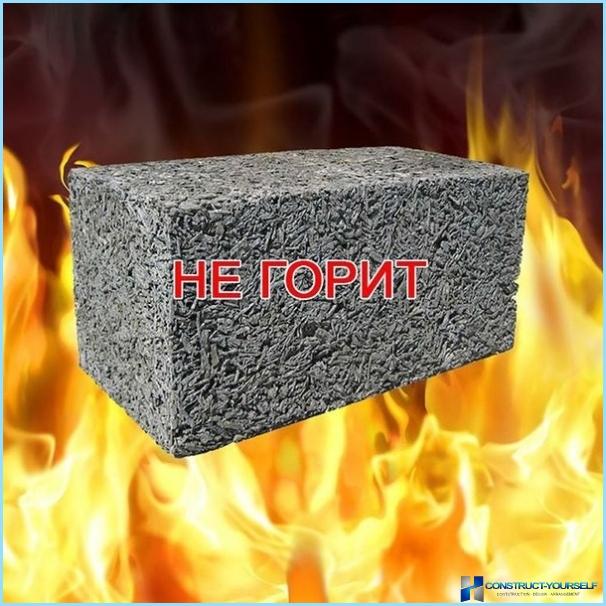
Soundproofing ↑
Their sound-insulating properties arbolit is superior to wood and brick. Absorption of the noise is equal to 0,17–0,6 units at the frequency of the sound 135-2000 Hz. To live in such a house is nice, quiet and cozy.
Summary ↑
This is all the technical characteristics of concrete blocks. It is in the totality of all indicators, the arbolit is considered one of the best and most effective materials for construction of residential buildings.

